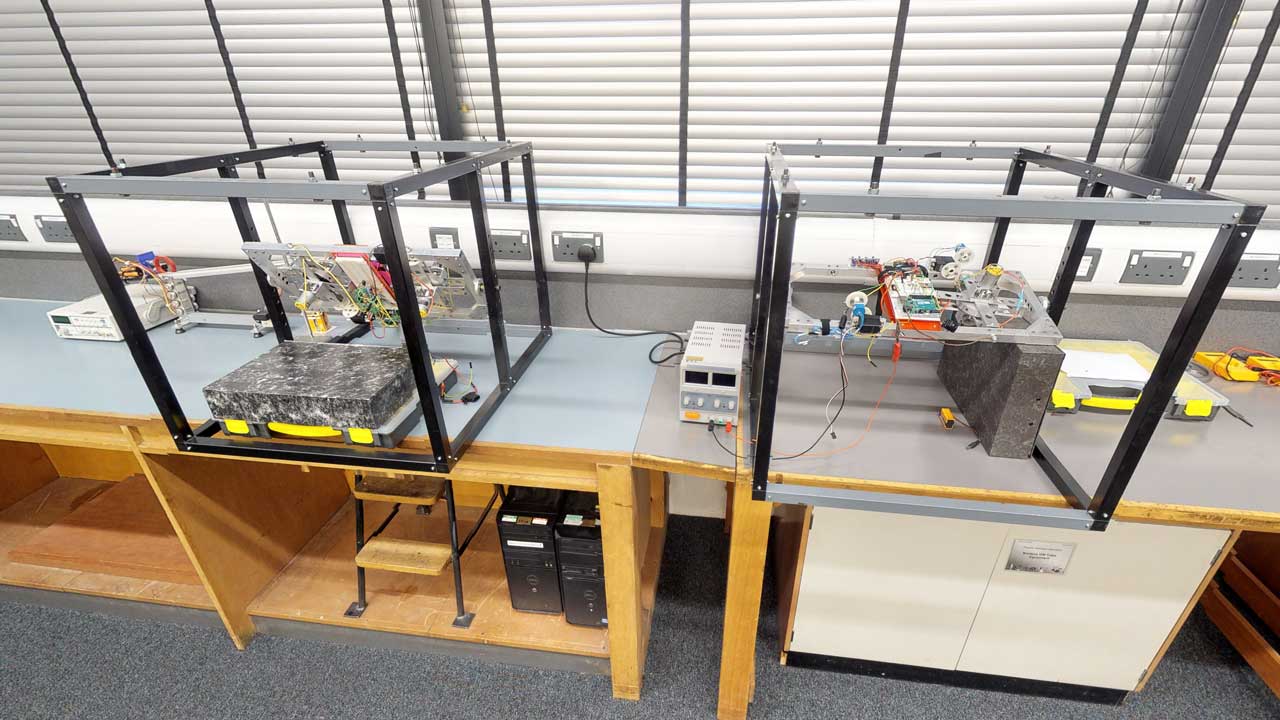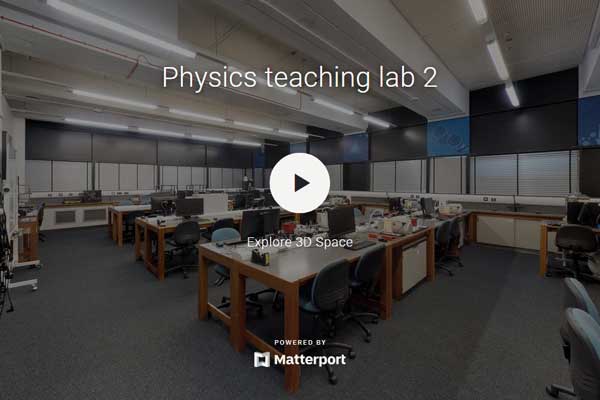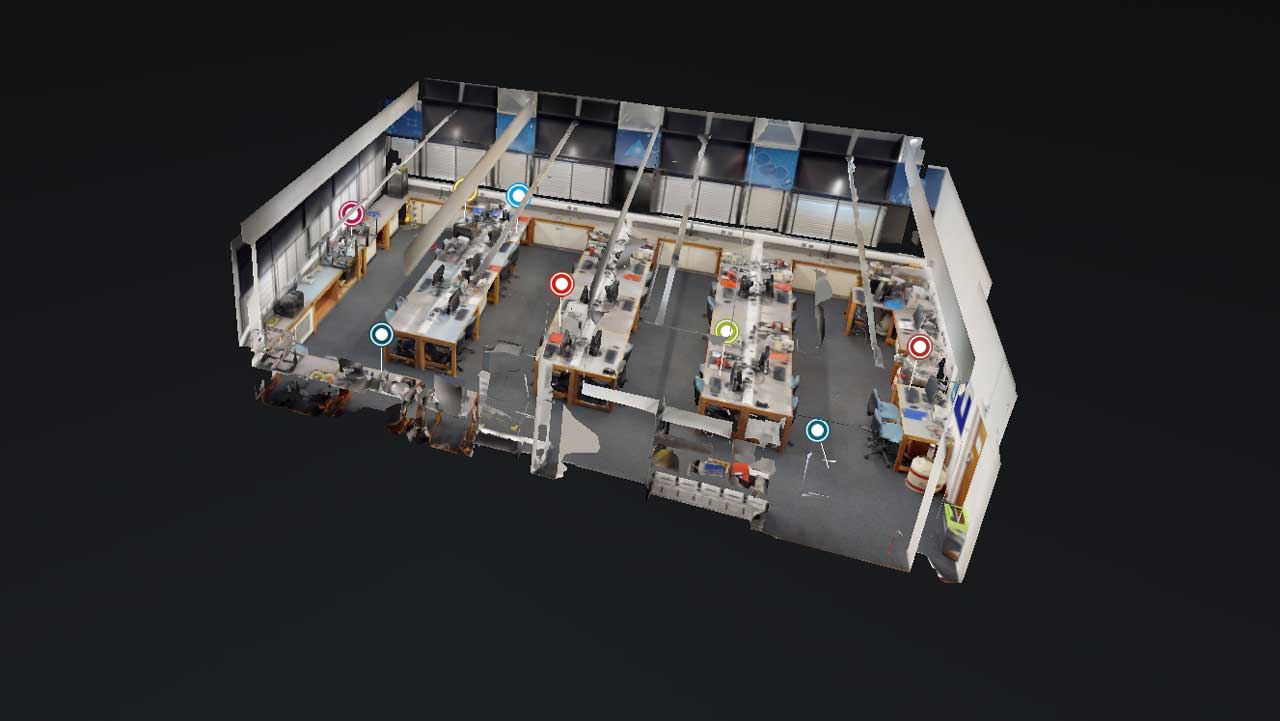
Physics teaching lab 2
This tour shows a range of equipment and facilities available in one of our modern, dedicated laboratories.
The interactive version allows you to walk through the lab and get a 360° view of the facilities.
Related links
Introduction
Our professional technicians have set out seven experiments demonstrating the range of equipment available in the Atomic and Nuclear lab.
- Characterisation of germanium detectors
- Rutherford scattering
- X-ray diffraction
- Determining the lifetime of muons
- Material processing with plasmas
- An investigation of the properties of 60Ni
- BSc and MPhys project work
Germanium detectors
The aim of this experiment is to explore the operation and characterise the performance of a state-of-the-art gamma ray detector - a so-called broad-energy (BEGe) germanium detector. Once calibrated the detector will be applied to the study of natural radioactive minerals.
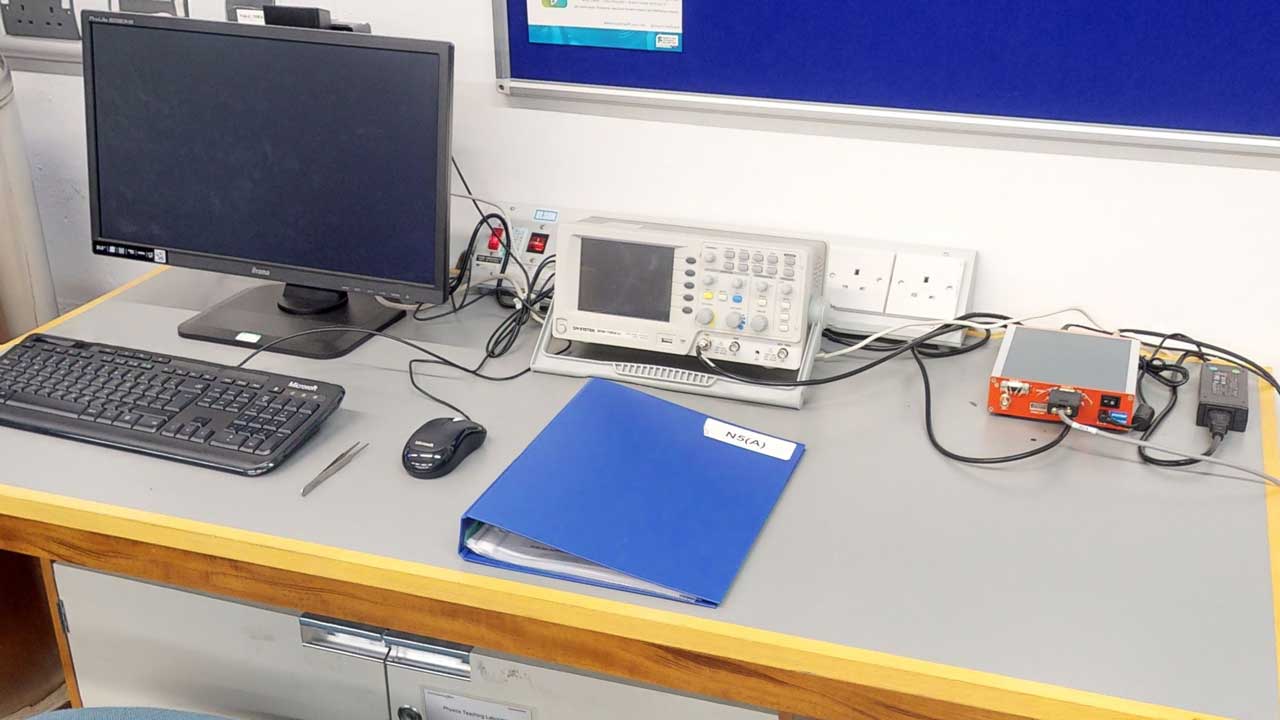
Rutherford scattering
This practical explores the seminal work of Rutherford in determining the structure of the atom. It recreates his classic experiment of scattering alpha particles from a gold foil before expanding the theory of Rutherford scattering to different materials and varying sample thicknesses.
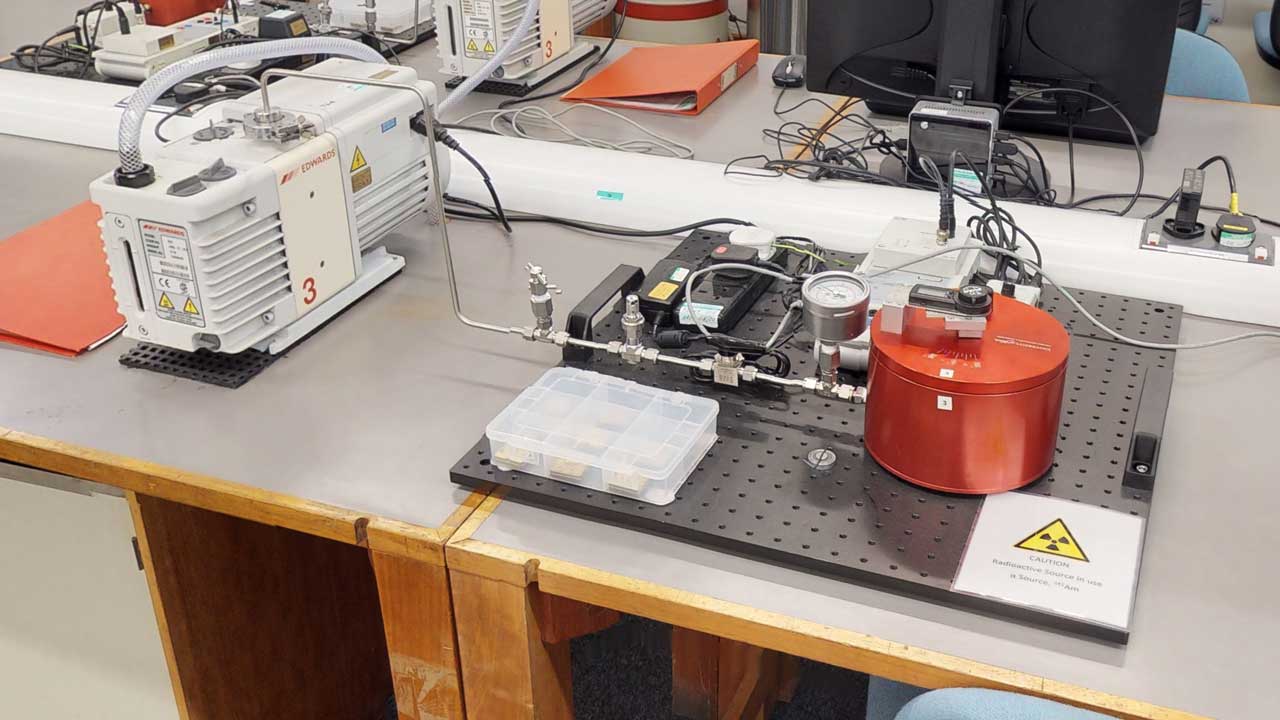
X-ray diffraction
An experiment which demonstrates the use of X-ray radiation for the determination of crystal structure. This practical demonstrates concepts of solid state physics, as well as introducing X-ray safety procedures and computer control of equipment via Labview interfaces.
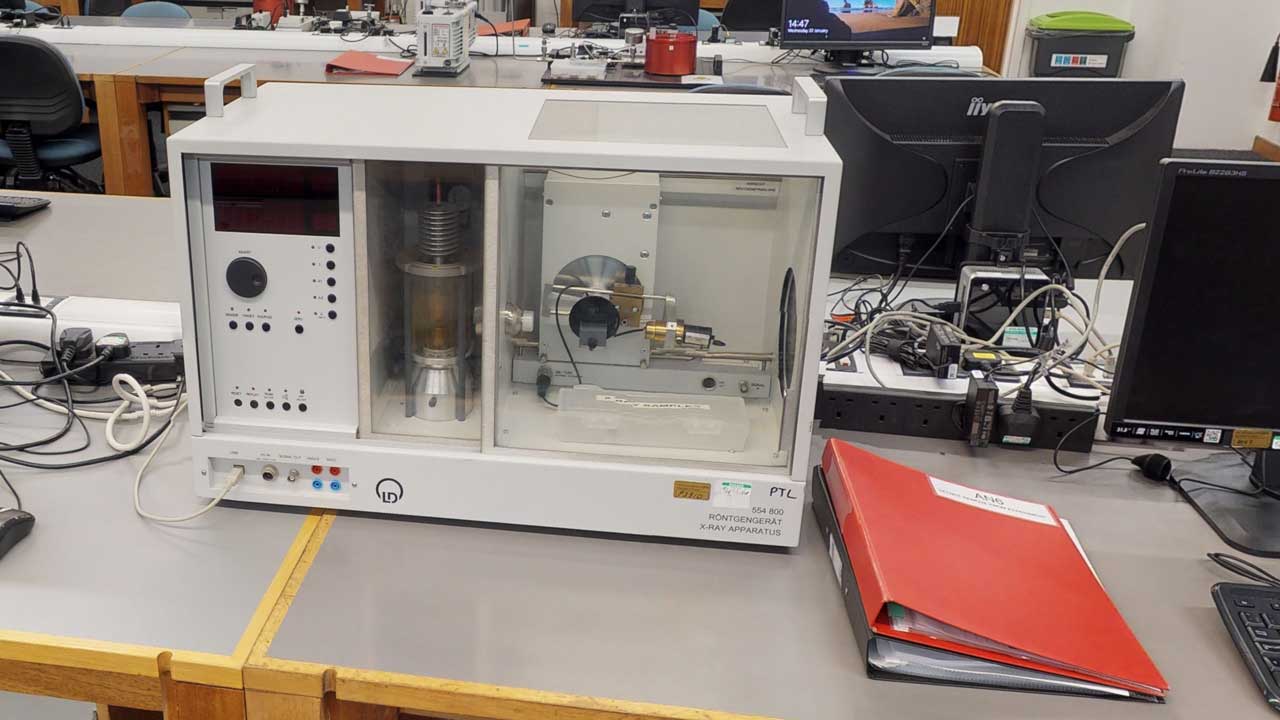
Determining the lifetime of muons
This practical experiment measures the lifetime of muons undergoing decay to more stable electrons, positrons and neutrinos. The speed of the muons mean will need to take into account relativistic time dilation effects. The experiment shows how to investigate phenomena with imperfect sampling of underlying statistical distributions.
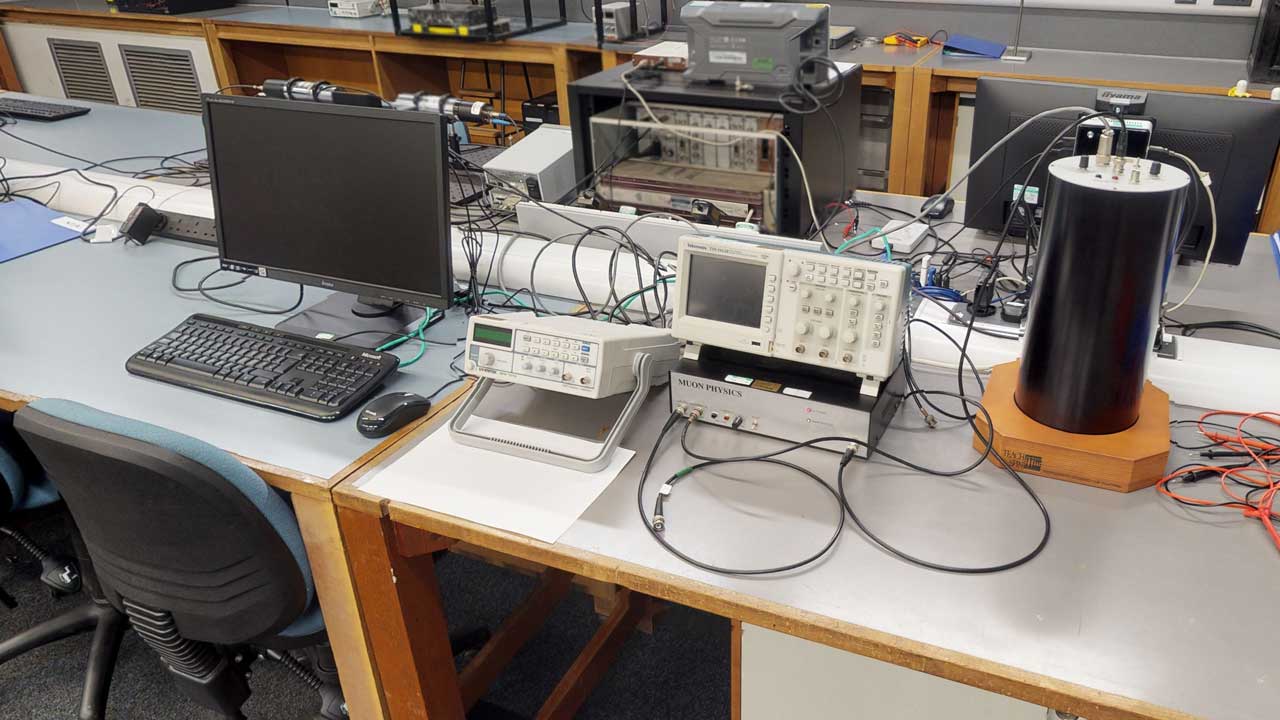
Material processing with plasmas
This practical experiment demonstrates the use of plasmas for modifying the surface properties of solids. It utilises an atmospheric-pressure He/O2 plasma jet to modify the 'wettability' of materials; an important property in industrial processing applications.
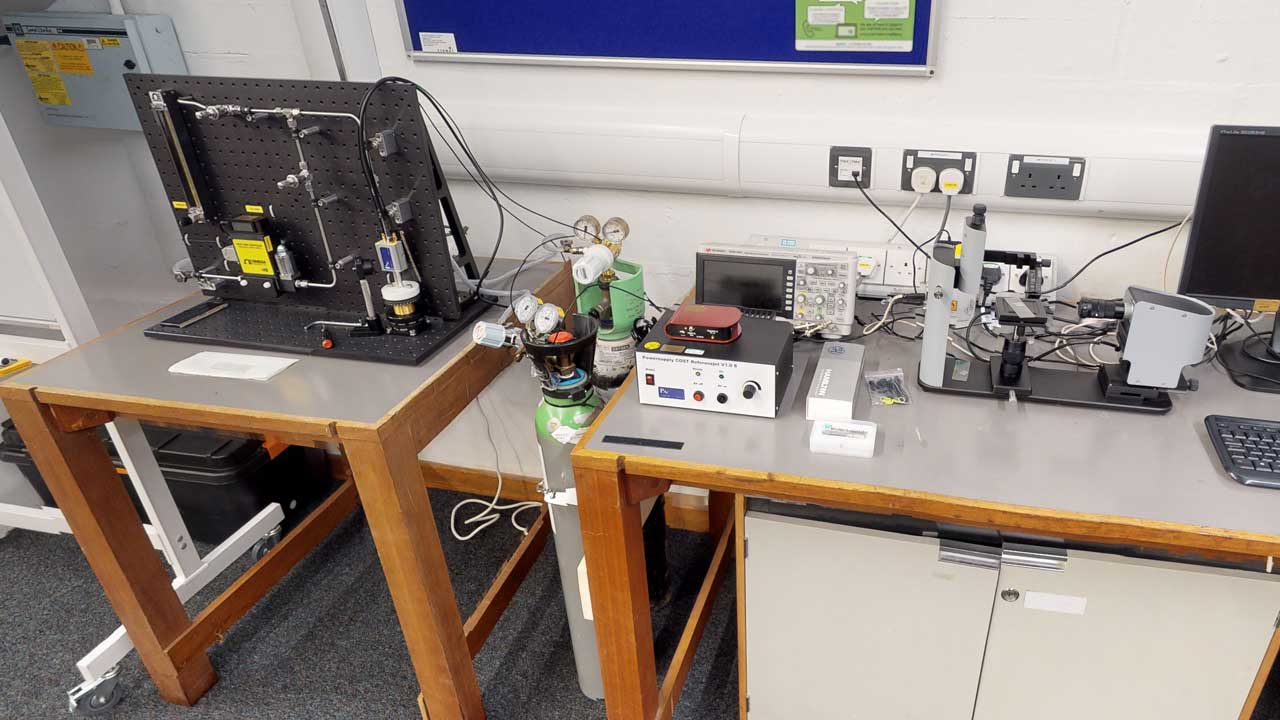
An investigation of the properties of 60Ni
This practical experiment uses gamma ray coincidence counting and angular correlations measurement to determine the properties of excited nuclear states. It uses NaI scintillation detectors and apply a range of common nuclear physics approaches.
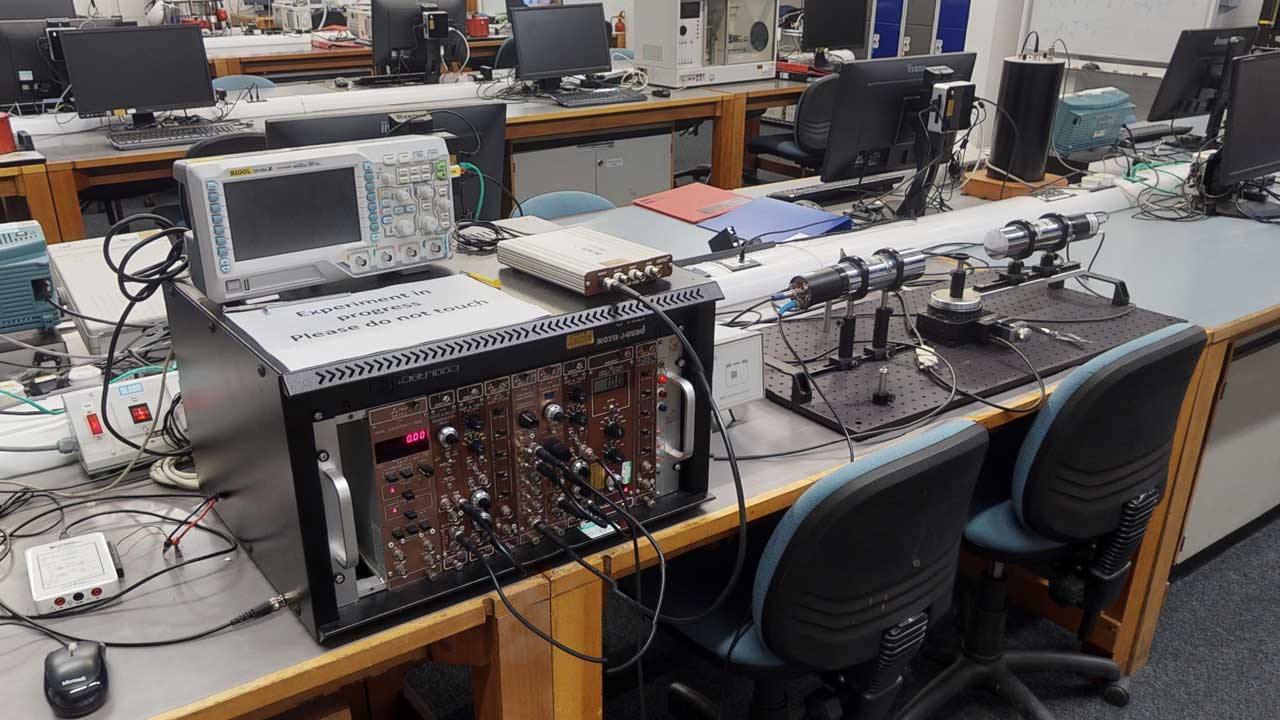
Gyroscopic stabilisation
A sample of projects: these experiments both explore aspects of gyroscopic stabilisation. One looks at the alignment of satellites in orbit, for example, to orient solar panels to maximise power generation; the other looks at stabilisation of boats in rough seas, for example in lifesaving applications.
